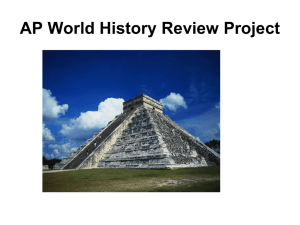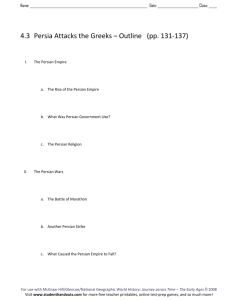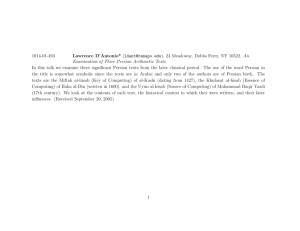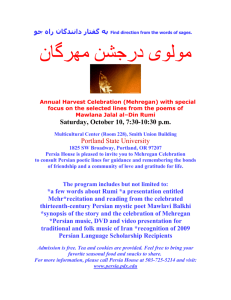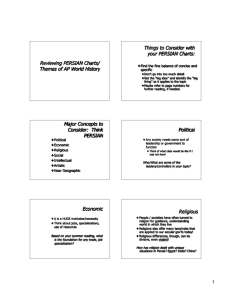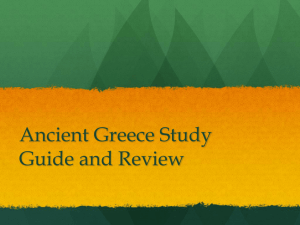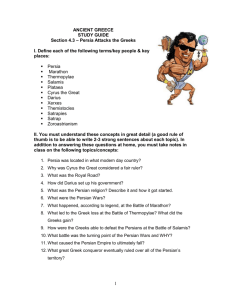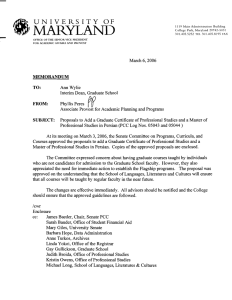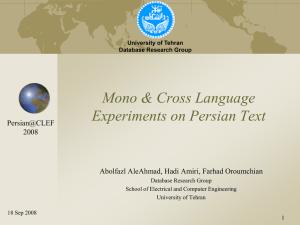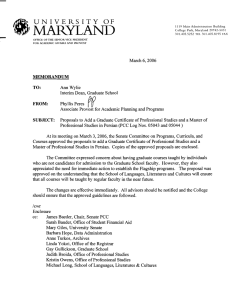AP World History Review Project Purpose
advertisement
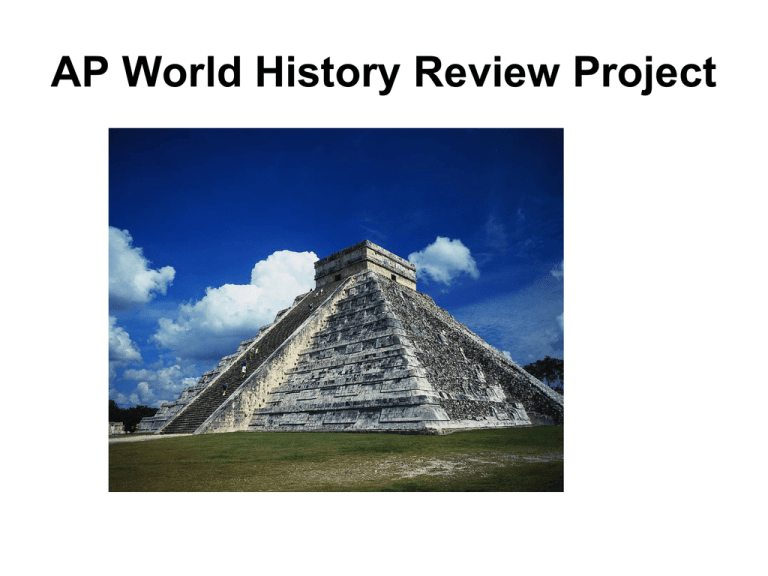
AP World History Review Project Purpose • The purpose of this project is to prepare students to pass the AP World History exam on May 14. • As we get closer to the exam, it is important to review major ideas, topics, and concepts from the year. • A little extra effort before the exam can have a big pay off in your future. • A passing score will increase the chances of getting into the college of your choice as well as receiving college credit, which can save you thousands of dollars! Outcomes • At the end of this activity students will – Know information on the AP World History exam – Practice with information on the AP World History exam – Cooperatively develop information for the project – Cooperatively present information to the class Process • 1. Choose groups. – There will be six groups corresponding to the six units of study. • 2. Organize your group. – Assign tasks. – Divide up the 6 project elements. • 3. Gather and categorize information. – Make a rough draft to plan your information. • 4. Make your hard copy and prepare it for display. – This should be on construction paper, poster or butcher paper. • 5. Prepare information for presentation. – Practice and time for better impact and score. Requirements • • • • • • • 1. Timeline 2. Bookends 3. Geographical Snapshots 4. Change over Time Chart 5. Comparative Chart 6. Study Guide Handout 7. Presentation Timeline • Define the most important events during the time period. • Organize by PERSIAN. – This means 6 different timelines! • Timelines should be at least 5 events per PERSIAN category and analyze the significance. • Make sure you don’t focus on just one region of the world Bookends • Bookends should be illustrated, without words. • Show the events that bookend the period – (start and end) • Be able to explain the changes and continuities that occurred. • Each bookend should show 5 events (10 total) • Make sure there is a clear division between periods. Geographical Snapshots • Select at least 2 important regions during your time period. • Snapshots should include a map and PERSIAN characteristics for the society. – This means 2 different maps and PERSIAN charts. – Pick a variety of areas and civilizations. – Make sure map is from correct time period. – Analyze why the characteristics occur. Change over Time Chart • Complete a CCOT chart for your time period – Pick one civilization in your time period – Use PERSIAN characteristics of a society – Include basic features at the beginning and end of the period. – Make sure to include changes and continuities. – Include an analysis of why each change and continuity occurred and put in context. Comparative Chart • Complete a comparative chart for a society outside your time period. – Pick two civilizations in your time period – Use PERSIAN characteristics of a society – Include basic features of the two societies – Make sure to include similarities and differences. – Include an analysis of why each similarity and difference occurred and use historical context. Study Guide Handout – Complete a typed 1 page study guide (front and back) handout for the test covering your unit. – Important information to be included from your time period should include; • 10 Multiple Choice questions – Make copies for your classmates. (35) – Also email a document to me so I can post it on the website. Presentation • Prepare a 10 – 20 minute presentation of your time period. • All members must take part. • Each member should describe the element they were in charge of. • Don’t just read the charts, highlight important concepts – KNOW THE INFO!. • Be prepared to answer questions. Grading • Project is worth two (2) TEST GRADES. • All members of a group will receive an individual and a group grade. • Work as a team for the best score. • No switching groups after today. Due dates are: • Unit 1 and 2 Tuesday and Wednesday - May 5 and 6 – Period 1: Technological and Environmental Transformations, (to c. 600 B.C.E.) – Period 2: Organization and Reorganization of Human Societies, (600 B.C.E. to c. 600 C.E.) • Unit 3 Thursday May 7 – Regional and Trans regional Interactions (600 C.E. – 1450) • Unit 4 Friday May 8 – Global Interactions (1450 - 1750) • Unit 5 Monday May 11 • Industrialization and Global Integration (1750-1900) • Unit 6 Tuesday May 12 – Accelerating Global Change and Realignments (1900 – Present)
